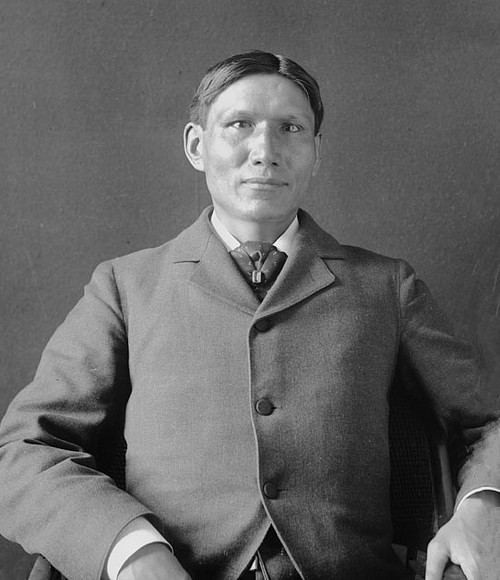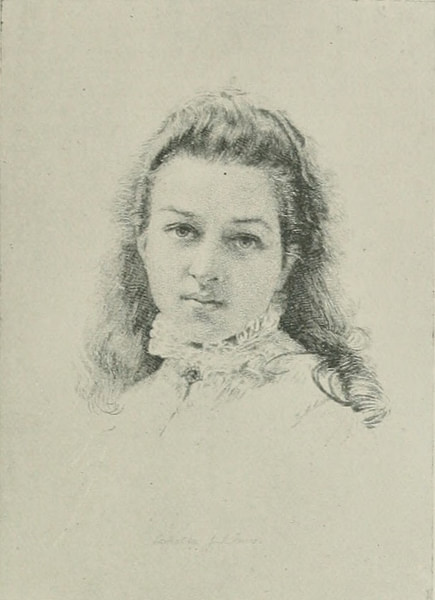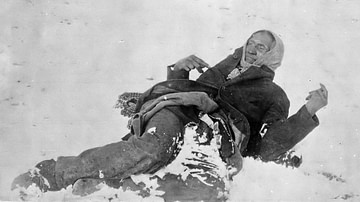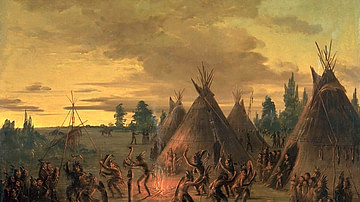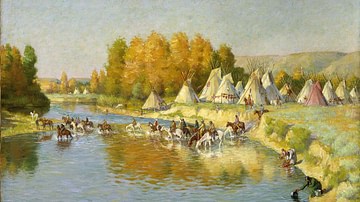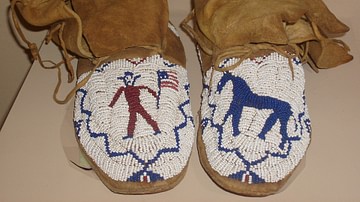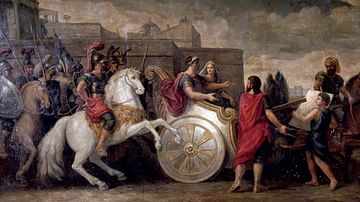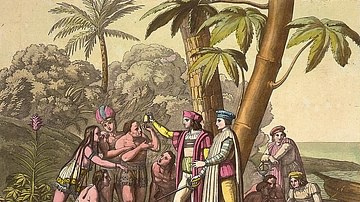Of the many first-person accounts of the aftermath of the Wounded Knee Massacre, the report by Sioux author and physician Charles A. Eastman (also known as Ohiyesa, l. 1858-1939) is among the best-known. Eastman describes his experiences in treating the wounded as well as the grief of those finding friends and relatives among the dead.
The massacre was initially understood as a "battle" as that is how it was presented by the first newspaper correspondents at the site, William Fitch Kelley (l. c. 1865-1916) of the Lincoln State Journal, Charles W. Allen of the Chadron Democrat, and Charles H. Cressy of the Omaha Daily Bee. Cressy scooped his colleagues with a dispatch sent the same day of the massacre, 29 December 1890, under the headline "A Bloody Battle." The other two followed his lead, as did many – though not all – of those who came after them, reporting on the "battle" through January 1891 and afterwards.
The word "massacre" was not regularly attached to the events at Wounded Knee Creek until after 1902, even though correspondents Thomas H. Tibbles and Susette La Flesche, writing for the Omaha World-Herald, filed stories as early as 2 January 1891 describing it as such. The presentation of the massacre as a great victory in battle of the Seventh Cavalry over hostile and treacherous "savages" encouraged the popular understanding of the events of 29 December 1890. On 3 January 1891, L. Frank Baum, then writer and editor of the Aberdeen Saturday Pioneer, and later famous as the author of The Wizard of Oz, called for "the total extermination of the Indians" after reading about the "battle", writing:
Having wronged them for centuries, we had better, in order to protect our civilization, follow it up by one more wrong and wipe these untamed and untamable creatures from the face of the earth. (Dunbar-Ortiz, 156)
This was the opinion of many, though not all, newspaper articles and editorials until accounts such as Eastman's gained wider readership and began to change people's opinions. Eastman became a popular author and lecturer, championing Native American rights, and so his account of the aftermath of the massacre – relating how the victims included at least 80 elderly men, a blind woman, and young mothers with children – had a significant impact on a wide audience.
Even so, the massacre is still regularly referenced as a "battle" in the present day, making Eastman's account – especially the details of unarmed Native Americans killed over 3 miles (5 km) from the site while trying to escape – as important now as when it was first published in 1916.
The Massacre
The Wounded Knee Massacre resulted in the deaths of over 250 Lakota Sioux, mostly unarmed and including the sick, elderly, women, and children. Accounts of the event differ – sometimes significantly – but most agree that the Sioux who had been ordered to camp at Wounded Knee Creek, South Dakota, on 28 December 1890 had few weapons and that, on the morning of 29 December 1890, were in no position to mount an offensive as they were surrounded – or nearly surrounded – by the heavily armed troops of the Seventh Cavalry who had placed light artillery on the ridge above the camp.
On the morning of 29 December 1890, when the troops were disarming the Sioux, a rifle was fired during an altercation between a trooper and a Sioux who was trying to hold on to his weapon. According to the generally accepted account, this single shot resulted in the surrounding troops opening fire on the camp below with small arms and four Hotchkiss M1875 mountain guns.
Other reports claim that, after the shot was fired, some Sioux warriors drew rifles from beneath their blankets and attacked the troops. Either way, by the time the shooting stopped, between 250-300 Sioux were dead, and friendly fire, for the most part, had killed 25 troopers – though some reports give a higher casualty count.
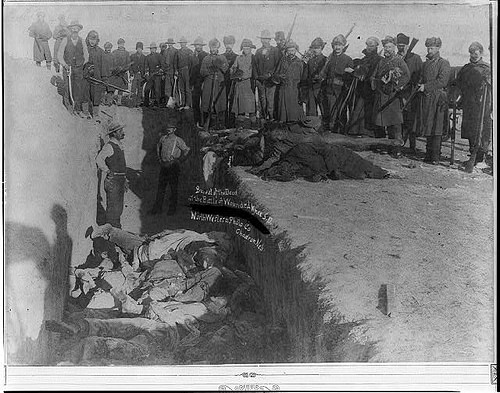
Charles Eastman, along with his future wife, the poet and teacher Elaine Goodale (l. 1863-1953), both attached to the Pine Ridge Reservation at the time as doctor and Superintendent of Indian Education, respectively, traveled the 18 miles (29 km) to Wounded Knee Creek to care for the wounded. Eastman's account comes from his 1916 autobiography From the Deep Woods to Civilization: Chapters in the Autobiography of an Indian, and it became one of the most important historical documents on the Wounded Knee Massacre.
Charles Eastman
Charles A. Eastman was a Santee Dakota Sioux born of a mixed-race mother (Mary Nancy Eastman or Winona) and a Santee Dakota father (Many Lightnings). He was named Hakadah ("The Pitiful Last") because his mother died during his birth. He was separated from his father, three brothers, and sister by the Dakota War of 1862 and was taken in by his maternal grandmother. In time, in keeping with Sioux tradition, he was given the name Ohiyesa ("Winner") and was raised in Canada.
Years later, he was reunited with his father, who had taken the Anglo name Jacob Eastman after converting to Christianity, and with his brother, who had taken the name John. His father insisted his sons receive a Euro-American education and, after converting to Christianity, Ohiyesa changed his name to Charles Alexander Eastman and attended Dartmouth College and the medical school of Boston University, graduating in 1890 as the first certified Native American in European medicine. He was a new doctor, therefore, when he returned to his homeland out west and became the physician for the Pine Ridge Reservation.
His future wife, Elaine Goodale, was an established poet by the age of 15 and a well-respected teacher in Virginia before traveling out west to accept the position of education superintendent at Pine Ridge Reservation. They would marry in June of 1891 and both become well-known public figures, but, in December of 1890, they were just two colleagues at Pine Ridge who responded to the needs of the wounded Lakota at Wounded Knee Creek in early January 1891.
Text
The following excerpt from Eastman's book is taken from American Indian History: A Documentary Reader, edited by Camilla Townsend. The events described are usually thought to relate to 1 January 1891, three days after the massacre.
At dusk, the Seventh Cavalry returned with their twenty-five dead, and I believe thirty-four wounded, most of them by their own comrades, who had encircled the Indians, while few of the latter had guns. A majority of the thirty or more Indian wounded [whom they brought back] were women and children, including babies in arms. As there were not tents enough for all, Mr. Cook offered us the mission chapel, in which the Christmas tree still stood, for a temporary hospital. We tore out the pews and covered the [cold] floor with hay and quilts. There we laid the poor creatures side by side in rows, and the night was devoted to caring for them as best we could. Many were frightfully torn by pieces of shells and the suffering was terrible.
General Brooke placed me in charge, and I had to do nearly all the work for, although the army surgeons were more than ready to help as soon as their own men had been cared for, the tortured Indians would scarcely allow a man in uniform to touch them. Mrs. Cook, Miss Goodale, and several of Mr. Cook's Indian helpers acted as volunteer nurses. In spite of all our efforts, we lost the greater part of them, but a few recovered, including several children who had lost all their relatives and who were adopted into kind Christian families.
On the day following the Wounded Knee massacre there was a blizzard, in the midst of which I was ordered out with several Indian police, to look for a policeman who was reported to have been wounded and left some two miles from the agency. We did not find him. This was the only time during the whole affair that I carried a weapon; a friend lent me a revolver which I put in my overcoat pocket, and it was lost on the ride. On the third day, it cleared, and the ground was covered with an inch or two of fresh snow. We had feared that some of the Indian wounded might have been left on the field and a number of us volunteered to go and see. I was placed in charge of the expedition of about a hundred civilians, ten or fifteen of whom were white men. We were supplied with wagons in which to convey any whom we might find still alive. Of course, a photographer and several reporters were of the party.
Fully three miles from the scene of the massacre we found the body of a woman completely covered with a blanket of snow and, from this point on, we found them scattered along as they had been relentlessly hunted down and slaughtered while fleeing for their lives. Some of our people discovered relatives or friends among the dead and there was much wailing and mourning.
When we reached the spot where the Indian camp had stood, among the fragments of burned tents and other belongings, we saw the frozen bodies lying close together and piled one upon another. I counted eighty bodies of men who had been in the council and who were almost as helpless as the women and babes when the deadly fire began, for nearly all their guns had been taken from them. A reckless and desperate young Indian fired the first shot when the search for weapons was well underway and, immediately, the troops opened fire from all sides, killing not only unarmed men, women, and children, but their own comrades who stood opposite them, for the camp was entirely surrounded.
It took all of my nerve to keep my composure in the face of this spectacle, and of the excitement and grief of my Indian companions, nearly every one of whom was crying aloud or singing his death song. The white men became very nervous, but I set them to examining and uncovering everybody to see if one were living. Although they had been lying untended in the snow and cold for two days and nights, a number had survived. Among them I found a baby of about a year old warmly wrapped and entirely unhurt. I brought her in, and she was afterwards adopted and educated by an army officer. One man who was severely wounded begged me to fill his pipe. When we brought him into the chapel he was welcomed by his wife and daughters with cries of joy, but he died a day or two later.
Under a wagon, I discovered an old woman, totally blind and entirely helpless. A few had managed to crawl away to some place of shelter, and we found a log store near by several who were badly hurt and others who had died after reaching there. After we had dispatched several wagon loads to the agency, we observed groups of warriors watching us from adjacent buttes; probably friends of the victims who had come there for the same purpose as ourselves.
A majority of our party, fearing an attack, insisted that someone ride back to the agency for an escort of soldiers, and as mine was the best horse, it fell to me to go. I covered eighteen miles in quick time and was not interfered with in any way, although if the Indians had meant mischief, they could have picked me off from any of the ravines and gulches.
All this was a severe ordeal for one who had so lately put all his faith in the Christian love and lofty ideals of the white man. Yet I passed no hasty judgment and was thankful that I might be of some service and relieve even a small part of the suffering.
Conclusion
As noted, the events of 29 December 1890 at Wounded Knee Creek were presented by the media as a "battle", which was started by the Sioux when they "treacherously" drew rifles from their blankets and forced the Seventh Cavalry to open fire. Correspondents such as William Fitch Kelley, who was present at the massacre and, by his own report, killed at least two Sioux himself, encouraged this interpretation of the event, highlighting the gallantry of the troopers, who, in his view, only meant the best for the Lakota until they were forced to defend themselves from a surprise attack. The interpretation of the massacre as a "battle" was encouraged further when 19 Medals of Honor were awarded to troopers for their actions during the conflict.
Even W. F. Kelley's reports, however, note that any such action by the Sioux would have been doomed to failure as the Native American camp was either surrounded or nearly surrounded by heavily armed troops on the ridge above them. As many in the Sioux camp had fought the US Army in previous engagements and were fully aware of the power of US ordnance, it is highly unlikely they would have launched an offensive from so weak a position.
Scholar Hugh J. Reilly notes how media coverage of the event made the "battle" interpretation possible:
Overall, coverage of Wounded Knee was sensationalized, much based on speculation and exaggeration, especially as the shooting was widespread and the casualties numerous and gruesome. Much of the reporting was based on actual coverage from the area of the battlefield but newspapers such as the Evening Star (Washington, D.C., December 30, 1890), further away from Wounded Knee, tried to explain the violence in more moderate terms rather than in the "blood thirsty revenge" mode of more anti-Indian papers. (Manning & Wyatt, 238)
Eastman's account, especially when considered alongside those of Sioux survivors of the massacre, and the more balanced reports of some correspondents, supports the claim that the so-called "Battle of Wounded Creek" was actually a massacre – a claim denied by the United States government until 1990, when an apology, but no compensation, was offered to the descendants of those who were slaughtered on 29 December 1890.
